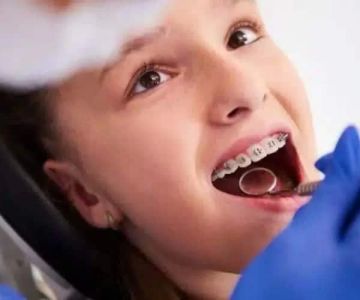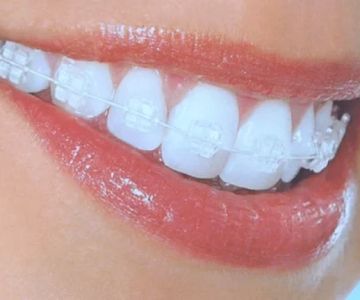Understanding the Optimal Age for Orthodontic Treatment: Comparing Needs for Children and Adults
Orthodontic treatment is a crucial step in correcting dental and jaw irregularities, commonly known as malocclusion. This procedure involves the strategic use of braces or other appliances to align teeth properly. While many individuals associate orthodontics primarily with children or teenagers, modern advancements and increased awareness have brought orthodontic treatment into the scope of adults too. Understanding the optimal age to begin orthodontic treatment and recognizing the distinct needs for children and adults are vital for effective outcomes. This article explores these aspects in detail and sheds light on tailored treatment strategies that cater to specific age groups.
Core Point #1: The Ideal Age for Orthodontic Treatment
The American Association of Orthodontists (AAO) recommends that children should have their first orthodontic check-up by age seven. At this age, a child's mouth contains a mix of baby and permanent teeth which allows orthodontists to forecast how the jaw will grow and how the permanent teeth will emerge. Starting at this age does not mean treatment will begin immediately; rather, it’s a prime opportunity for early detection of potential issues. Early examination can identify problems such as crowding, misalignment, and bite issues that, if caught early, can be more easily corrected through interceptive strategies. However, it's important to note that not all children require immediate orthodontic intervention, but those who do gain a significant advantage in achieving a healthy dental structure. Moreover, early evaluation can prevent issues from becoming more severe, possibly reducing the extent and duration of future treatment.
Core Point #2: Orthodontic Needs and Treatment Options for Children
Children’s orthodontic needs typically involve guiding the growth of their jaw and alignment of their new teeth. This is referred to as Phase I or interceptive treatment, which can include the use of partial braces, headgear, or other appliances to address developmental issues. The goal is to prepare the mouth for a seamless transition to Phase II treatment, which usually occurs in adolescence. This second phase typically involves full braces or clear aligners to ensure the teeth are in correct alignment once all permanent teeth have erupted. The timeline for orthodontic treatment in children varies significantly and is tailored to individual needs. A comprehensive plan from an early age can help mitigate issues that may otherwise require complex procedures in the future.
Core Point #3: Understanding Adult Orthodontic Needs
While treatments for children focus on guiding development, adult orthodontics often requires correcting existing issues that have developed over time. Adults seeking orthodontic treatment might have different priorities such as aesthetic considerations, health motivations, or resolving bite complications that affect daily life. Adult orthodontics can also involve correcting relapse from previous orthodontic treatment that was not maintained properly. The technology and methods used for adults may also differ; for instance, clear aligners such as Invisalign are particularly popular among adults due to their discreet nature. Moreover, treatments may be more complex if they involve surgical orthopedics to adjust the jaw. Despite these complexities, the availability of various treatment options enables personalized solutions that cater to adult needs effectively.
Core Point #4: Considerations and Benefits of Delayed vs. Early Treatment
Whether orthodontic treatment begins in childhood or adulthood, it's essential to weigh the benefits of early intervention against the potential delays. Early treatment can be more efficient, simpler, and cost-effective, preventing prolonged and intensive future procedures. Meanwhile, advancements in orthodontic technology have made adult treatments less intrusive and more adaptable to active lifestyles. For adults, the decision to pursue orthodontic treatment might be motivated by both cosmetic and functional reasons, emphasizing the importance of personal preferences and professional advice. Consulting with a qualified orthodontist from a trusted source like Dentistry Toothtruth is essential for making informed decisions tailored to the individual's dental health goals.
Conclusion: Tailoring Orthodontic Treatment to Age-Specific Needs
In summary, the determination of the best age to begin orthodontic treatment is fundamentally linked to individual dental development and health needs. Early evaluation plays a critical role in identifying potential issues, allowing children to benefit from timely interventions that can pave the way for smoother transitions to future phases of treatment. At the same time, adults continue to gain access to innovative solutions that provide flexibility and effectiveness to meet diverse orthodontic goals. It’s essential for both children and adults to have consultations with orthodontic professionals who can guide them through personalized treatment plans. Proactive and informed decision-making is key to achieving optimal dental health outcomes for all ages.




 Westgate Dental Arts
Westgate Dental Arts Coventry Family Dental
Coventry Family Dental Familia Dental
Familia Dental Dr. Daniel S. Fife, DDS
Dr. Daniel S. Fife, DDS Dentistry At Suburban Square: Michael I. Wollock, DMD
Dentistry At Suburban Square: Michael I. Wollock, DMD Comfort Care Dental
Comfort Care Dental The Importance of Oral Health Education During Pregnancy for a Healthy Pregnancy
The Importance of Oral Health Education During Pregnancy for a Healthy Pregnancy Why Skipping Dental Checkups Can Lead to Bigger Oral Health Problems
Why Skipping Dental Checkups Can Lead to Bigger Oral Health Problems Advantages of Porcelain Dental Restorations
Advantages of Porcelain Dental Restorations Best Tips for Brushing Your Teeth Properly for Healthy Gums: Essential Techniques for Oral Health
Best Tips for Brushing Your Teeth Properly for Healthy Gums: Essential Techniques for Oral Health How Can Diabetes Cause Tooth and Gum Problems? Preventing and Managing Oral Health Issues
How Can Diabetes Cause Tooth and Gum Problems? Preventing and Managing Oral Health Issues Healthy Habits for Promoting Good Oral Health and Hygiene: Tips for a Healthy Smile
Healthy Habits for Promoting Good Oral Health and Hygiene: Tips for a Healthy Smile